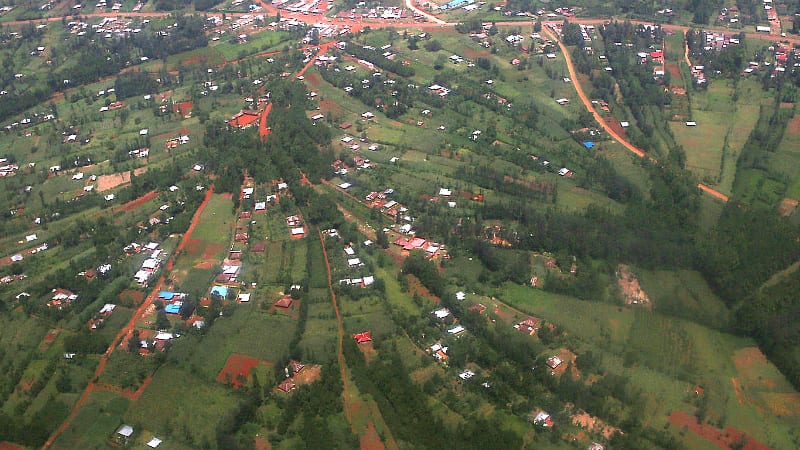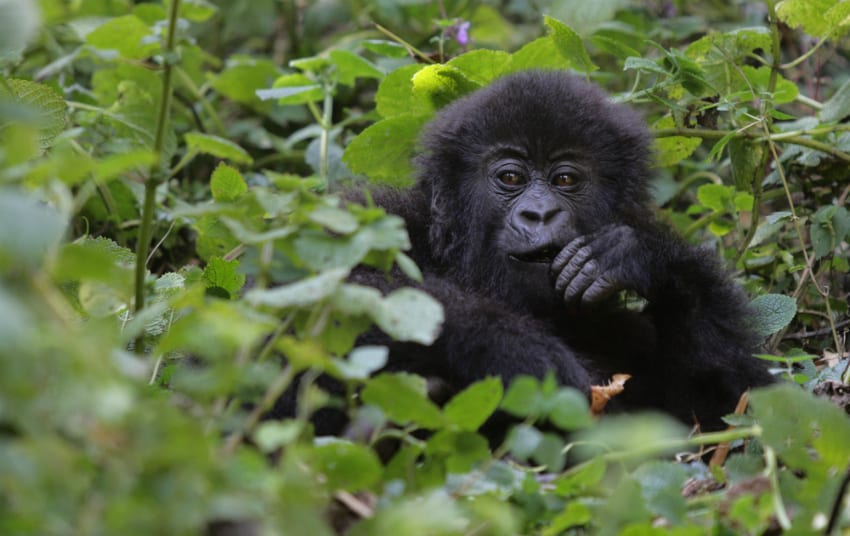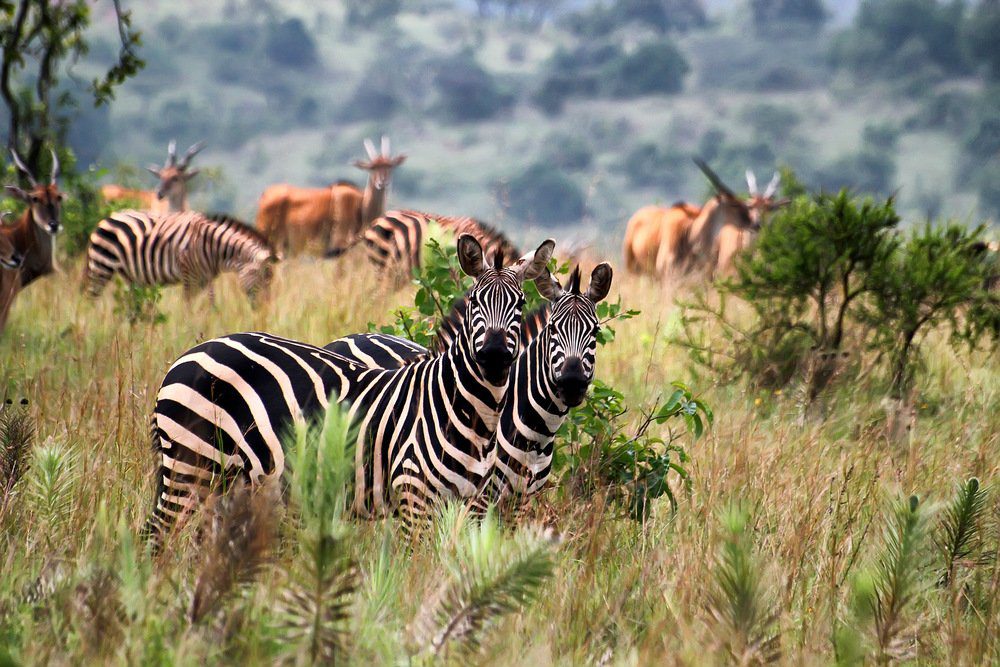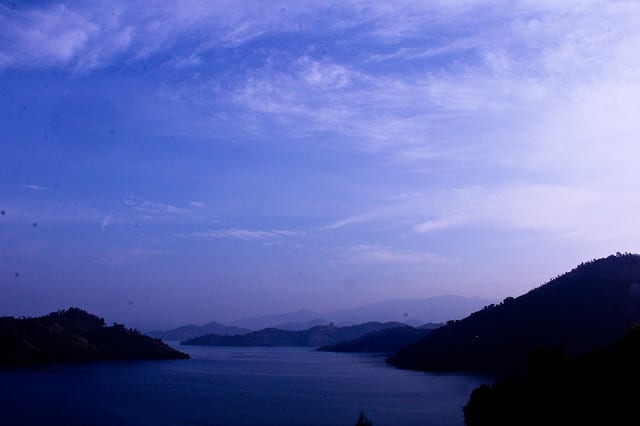Share this!
Brushed In Beauty: Roaming Rwanda, The ‘Land Of A Thousand Hills’
Tiny though it might be, Rwanda is brushed in beauty. The tourist board has labelled it the Land of a Thousand Hills, but that’s probably understating it. Here hills are heaped upon hills to such an extent that the whole country looks like one giant piece of bright green bubble wrap. And if sheer physical good looks weren’t enough Rwanda backs it up with an impressive array of sights and attractions ranging from the world-renowned mountain gorillas, to demanding cycle trails, quality museums, chimpanzees and colobus monkeys, volcanoes and elephants and zebras.
What makes Rwanda really stand out though is the effort and money being poured into its tourist industry. Old and once near-abandoned national parks have been revamped and restocked, and whole new parks are being designated (in 2016 the forests of the new Gishwati-Mukura National Park will open to the public).
Right now Rwanda is one of the most dynamic and enjoyable countries in Africa and here’s our guide of how to get the most out of it.
Kigali

For anyone who has travelled much in East Africa, Kigali comes as a shock. It’s clean, organised, safe and functional. Even the main bus station is a pleasure to walk around! Not just that, but this is a city with lots to see and do, arguably the best dining in East Africa and a near-perfect climate. However, as all-out enjoyable it is spending time in Kigali, the city’s number one tourist attraction is in fact not a nice place at all. The Kigali Genocide Memorial Centre recalls those 100 blood-soaked days when the city, and Rwanda in general, boiled in the hatred of genocide. This museum is very well laid out and so powerful that even the most cold-hearted visitor is likely to be drawn to tears. Other less-moving sights include the Natural History Museum, Inema Art Centre and the chance to join a number of interesting city tours that give you a closer look at local life.
Volcanoes National Park

There are almost as many reasons to visit Rwanda as there are hills and mountains in the country, but Rwanda’s biggest hills and by far its biggest tourist draw is the utterly spectacular Volcanoes National Park. A part of the famous Virunga chain of cloud-scraping — and in places live and bubbling — volcanoes this is the place where Dian Fossey studied ‘her’ gorillas in the mist and where today visitors from around the world come for their very own encounter with the mountain gorillas. Only a limited number of people are allowed to see the gorillas each day and demand can be high so book ahead. Most people spend just a day in the park seeing the gorillas, but this is a King-Kong sized oversight. In my opinion there are few more spectacular places in Africa, and days could be spent here hiking silent mist-soaked mountain trails, bird-watching or tracking a group of gaudy coloured habituated golden monkeys. While you’re in the area don’t miss a fun afternoon at the Iby’lwacu Cultural Village, where you can see the rowdy intore dancing and even get ‘married’ to a King or Queen.
Akagera National Park

Akagera, in the far east of the country, is a national park on a mission. Once, in the pre-genocide days, it was regarded as one of the better national parks in East Africa. Its shimmering hippo-filled lakes and glorious green rolling hills were home to masses of antelope, elephants, buffaloes and lions. However, years of war and neglect took their toll and much of the wildlife was poached out. Until now, that is. Management of the park was recently handed to the energetic African Parks network and they’ve been busy beefing up security, re-laying the road network, building luxury lodges and re-stocking the park with big mammals. The park is now home to lots of giraffes (these were introduced and never native), impala, waterbuck, hippos, elephants and, thanks to a re-introduction programme that made news reels around the world in mid-2015, the first lions are back in Akagera causing problems for the herbivores. Next on the parks wish list is the re-introduction of black rhinos (hopefully in 2016), and when that takes place then Akagera will be home to all the Big Five and will once again be a quality safari destination.
Nyungwe National Park

Rwanda doesn’t just do close encounters with gentle giants. You can also meet your nearest, dearest, and most mischievous, cousin here: chimpanzees. The number of people going to visit the habituated chimpanzees of Nyungwe National Park is a mere fraction of those seeing the gorillas, but we reckon that’s their loss. The chimps certainly don’t let you get as close to them as the gorillas but they’re often much more active and when they come tearing through the forest, banging the hollow trunks of trees and screaming the encounter is every bit as exciting (or nerve wracking depending on your point of view!). Even if you didn’t bother to see the chimps though, Nyungwe Forest is an absolute delight of a place to explore. It’s one of the oldest, and most biologically diverse forests this side of the Congo basin. Its undergrowth strangled hillsides are laced in well-maintained walking trails leading to gushing rivers and waterfalls and the park is home to one of the highest densities of primates in Africa (a total of thirteen species) including a habituated group of some four hundred Angolan colobus monkeys. This is the only place in Africa where colobus are fully habituated to people, and watching the playful antics of these graceful black and white monkeys from such close quarters is a rare treat. Other primates that you stand a good chance of seeing include gray-cheeked mangabeys, Dents monkeys and l’Hoest’s monkeys. Another unique selling point of Nungwe Forest is the canopy walkway which allows visitors to see the forest from the point of view of a monkey as you tread the swaying walkway through the tree tops.
Huye
Rwanda’s second city is more a small town than a city and is a relaxed place to spend time. The city hosts the Ethnographic Museum, which is one of the best-presented, and most comprehensive archaeological and ethnographic museums in all of East Africa. Other sights in Huye include tranquil botanical gardens and an impressive cathedral.
Nyanza
South of Kigali, little old Nyanza was once the home of royalty. The former royal residence as well as a replica of the original ‘palace’ are now museums and the site is also home to a small herd of cows with horns that would make an elk jealous. Also to be found in Nyanza is the Rwesero Art Museum; the premier such collection in Rwanda.
Kibuye

Far from the Indian Ocean but far from lacking in palm trees, Lake Kivu is where Rwandans go when they want to have fun in the sun. Here two different resort towns vie for attention: most Rwandans prefer larger Gisenyi, which has more of a party atmosphere, but most foreign visitors though opt for Kibuye with its beautifully knotted shoreline, offshore islands and lots of peace and quiet. When you’re done with the boat rides head to the brand new Museum of the Environment which basically outlines how stupid people are with our endless destruction of the planet’s resources! It’s all impressively well thought out. Kibuye is also the halfway point on the challenging Congo Nile Trail, a 227km cycle or walking trail, along the length of Lake Kivu that rewards with fabulous scenery and rich cultural encounters.
Getting There
Rwanda is fairly well connected to the rest of Africa and Europe. KLM offers direct flights from Amsterdam and the main players in the African market are Kenya Airways and Ethiopian Airways. You can easily enter overland from Uganda, Tanzania and, security situation depending, Burundi and the DRC.

Accommodation
Rwanda has excellent hotels and lodges in all major tourist towns. In Kigali try the Kigali Serena Hotel. In the Volcanoes National Park you won’t go wrong at the Sabyinyo Silverback Lodge. In Nyungwe National Park the Nyungwe Forest Lodge offers serious luxury in the middle of a tea estate. In Akagera National Park the Ruzizi Tented Lodge keeps you close to the bush but in the lap of luxury without being over the top.
AFK Travel
More Posts by AFK Travel





